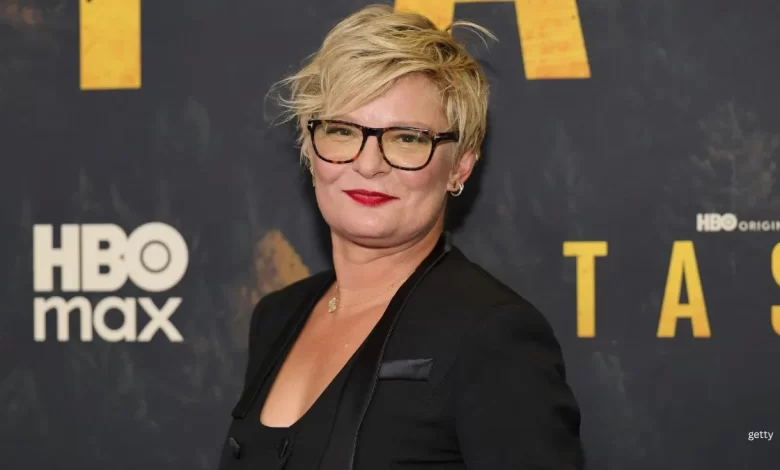Martha Plimpton Gets Real: Why She’s ‘Not Ashamed’ of Her ADHD

In the ever-evolving conversation around mental health and neurodiversity, one thing has become increasingly clear: the voices of celebrities and public figures matter. When someone in the spotlight opens up about personal challenges, it can empower countless others who are silently struggling. Recently, acclaimed actress Martha Plimpton has done just that, candidly sharing her journey with Attention Deficit Hyperactivity Disorder (ADHD). Her message is simple but powerful: she is not ashamed.
The significance of her openness, the broader understanding of ADHD, and why her honesty could help reshape the cultural narrative. By unpacking her words, experiences, and advocacy, we’ll also explore how her story reflects wider societal shifts toward acceptance and awareness.
Who Is Martha Plimpton? A Brief Look at Her Career and Legacy
Before examining her recent revelations, it’s worth taking a moment to appreciate who Martha Plimpton is and why her voice carries so much weight.
Plimpton, born in 1970, comes from a family deeply rooted in the arts—her parents are actors Keith Carradine and Shelley Plimpton. She rose to prominence as a child actress in the 1980s, quickly making a name for herself with her raw, authentic performances. Known for films like The Goonies (1985), Running on Empty (1988), and Parenthood (1989), Plimpton developed a reputation as a fearless performer, never shying away from complex or unconventional roles.
Her career extended beyond film to theater and television. She’s received critical acclaim on Broadway, including a Tony Award nomination, and starred in the beloved sitcom Raising Hope. In every medium, Plimpton has demonstrated remarkable range, blending comedy, drama, and an unwavering authenticity that audiences admire.
It’s this same authenticity that shines through when she talks about her personal life, particularly her journey with ADHD.
Martha Plimpton Gets Real About ADHD
When Martha Plimpton gets real about her ADHD, she does more than reveal a personal diagnosis—she dismantles the stigma that has long surrounded neurodiverse conditions. She has spoken openly about her challenges with attention, focus, and energy, but importantly, she emphasizes that these struggles are only part of the story. ADHD is not a source of shame for her; it is simply part of who she is.
Plimpton has made clear that she refuses to internalize negative stereotypes. For decades, ADHD has been portrayed as a flaw, often associated with hyperactive children or misunderstood as laziness in adults. By saying she is “not ashamed”, Plimpton challenges these outdated notions head-on. She living with ADHD not as a defect but as a different way of experiencing the world—one that comes with both difficulties and strengths.
Her candidness provides a refreshing counterpoint to the silence or embarrassment many still feel about mental health conditions.
Understanding ADHD: Beyond the Stereotypes
To fully appreciate why Plimpton’s openness matters, it helps to understand what ADHD is—and what it isn’t.
ADHD, or Attention Deficit Hyperactivity Disorder, is a neurodevelopmental condition that affects millions of people worldwide. It is characterized by patterns of inattention, hyperactivity, and impulsivity that can interfere with daily functioning. However, ADHD exists on a spectrum, and symptoms vary greatly from person to person.
Some common signs include:
- Difficulty sustaining attention on tasks or conversations
- Forgetfulness or disorganization
- Restlessness or difficulty sitting still
- Impulsivity in speech or actions
- Trouble with time management
For decades, ADHD was stereotyped as a condition of hyperactive young boys. This narrow view left many undiagnosed—particularly women and adults. Today, research shows that ADHD is far more nuanced. Adults often present with less hyperactivity and more issues related to focus, organization, and managing responsibilities.
Plimpton’s acknowledgment of her ADHD highlights this very reality: ADHD is not confined to a single gender, age, or stereotype. It is diverse, widespread, and deserving of compassion and understanding.
The Stigma Around ADHD—and Why It Persists
Despite growing awareness, stigma around ADHD remains. Many adults hesitate to share their diagnosis, fearing they’ll be judged as incompetent, irresponsible, or unreliable. In workplaces and social settings, misunderstandings abound.
Some common stigmas include:
- “ADHD isn’t real.” Critics dismiss it as an excuse for laziness or lack of discipline.
- “It only affects kids.” Adults with ADHD are often overlooked or doubted.
- “It’s overdiagnosed.” While some argue ADHD is overdiagnosed, research shows it is also underdiagnosed—particularly in women.
- “Medication is the only solution.” In reality, treatment options are varied, including therapy, coaching, lifestyle changes, and, for some, medication.
Against this backdrop, when Martha Plimpton gets real, her message is radical. By refusing shame, she chips away at misconceptions and encourages others to embrace their full selves.
Why Martha Plimpton’s Voice Matters
Celebrities speaking out about mental health isn’t new, but each story adds unique value. Plimpton’s voice matters for several reasons:
- Representation for Women with ADHD
Historically, ADHD has been underdiagnosed in women. Symptoms often manifest differently—less overt hyperactivity, more internalized struggles like forgetfulness or difficulty managing responsibilities. Plimpton’s openness shines a light on this overlooked demographic. - Breaking the Silence Around Adult ADHD
For many, ADHD is seen as a childhood condition. Plimpton’s story reinforces the reality that ADHD persists into adulthood and requires lifelong strategies. - Destigmatizing Neurodiversity in the Arts
As an actress, Plimpton demonstrates that neurodiverse individuals can thrive in demanding creative industries. Her success challenges assumptions about what people with ADHD can or cannot achieve. - Encouraging Self-Acceptance
Perhaps most importantly, her declaration of “not ashamed” models self-acceptance. For those struggling with shame or secrecy, her words may feel like permission to breathe a little easier.
The Power of ‘Not Ashamed’
Why does Plimpton’s choice of words matter so much? Because shame is one of the heaviest burdens carried by people with ADHD. Shame arises from years of being misunderstood, criticized, or compared unfavorably to others. Adults with ADHD often recall childhood experiences of being called “lazy” or “scatterbrained,” leading to long-term impacts on self-esteem.
By saying she is “not ashamed,” Plimpton disrupts this cycle. She reclaims her identity from a place of strength rather than weakness. This reframing can be life-changing for others with ADHD, encouraging them to reject shame and embrace self-compassion.
ADHD as a Source of Strength
Another key part of Plimpton’s narrative is the acknowledgment that ADHD isn’t just about deficits. While challenges are real, ADHD can also foster creativity, resilience, and unique problem-solving abilities.
Many people with ADHD describe themselves as:
- Highly creative and innovative
- Energetic and passionate about interests
- Adaptable to change
- Able to think outside the box
- Excellent at hyperfocus on topics they love
Plimpton herself embodies many of these traits. Her career is a testament to creative resilience and a refusal to be boxed in by convention. When she highlights her ADHD, she also highlights the strengths it may bring to her artistry.
How Society Is Changing the Conversation
Plimpton’s honesty comes at a time when the cultural narrative around ADHD is shifting. Increased awareness on social media platforms like TikTok has led to more adults—especially women—seeking diagnoses and treatment. Mental health advocacy has moved into mainstream conversations, with workplaces, schools, and media outlets discussing neurodiversity more openly.
However, progress is uneven. Access to diagnosis and treatment remains a challenge for many, particularly in underfunded healthcare systems. Stigma persists in professional environments where ADHD is still misunderstood.
That’s why high-profile voices like Plimpton’s are invaluable. They accelerate cultural change by making ADHD visible, relatable, and—crucially—valid.
Lessons from Martha Plimpton’s Story
When Martha Plimpton gets real, she offers several lessons for both individuals and society at large:
- Honesty Is Liberating
Speaking openly about personal challenges doesn’t diminish us—it humanizes us. - Shame Isn’t Necessary
Conditions like ADHD are not moral failings. They are differences in brain functioning, deserving of support and understanding. - Representation Changes Lives
Seeing someone in the public eye live authentically with ADHD can help others feel less isolated. - ADHD Is Not the End of the Story
A diagnosis doesn’t define a person’s limits; it simply provides context for their experiences.
Moving Forward: Building a More Inclusive World
Plimpton’s message invites us to imagine a world where ADHD and other forms of neurodiversity are embraced rather than stigmatized. This means:
- Better Education about ADHD in schools and workplaces
- Accessible Resources for diagnosis and treatment
- Media Representation that reflects diverse experiences with ADHD
- Supportive Communities where people can share openly without fear of judgment
Her story is not just about one actress—it’s about a movement toward acceptance and inclusion.
Conclusion:
In sharing her truth, Martha Plimpton does more than talk about ADHD—she challenges us to rethink our assumptions. She shows that living authentically, without shame, is not only possible but powerful.
Her journey underscores that ADHD is not a weakness but a part of the rich tapestry of human experience. When Martha Plimpton gets real, she encourages countless others to do the same, creating ripples of acceptance and understanding across society.
In a world where silence and stigma have too often dominated the conversation, her declaration—“I am not ashamed”—is nothing short of revolutionary.




